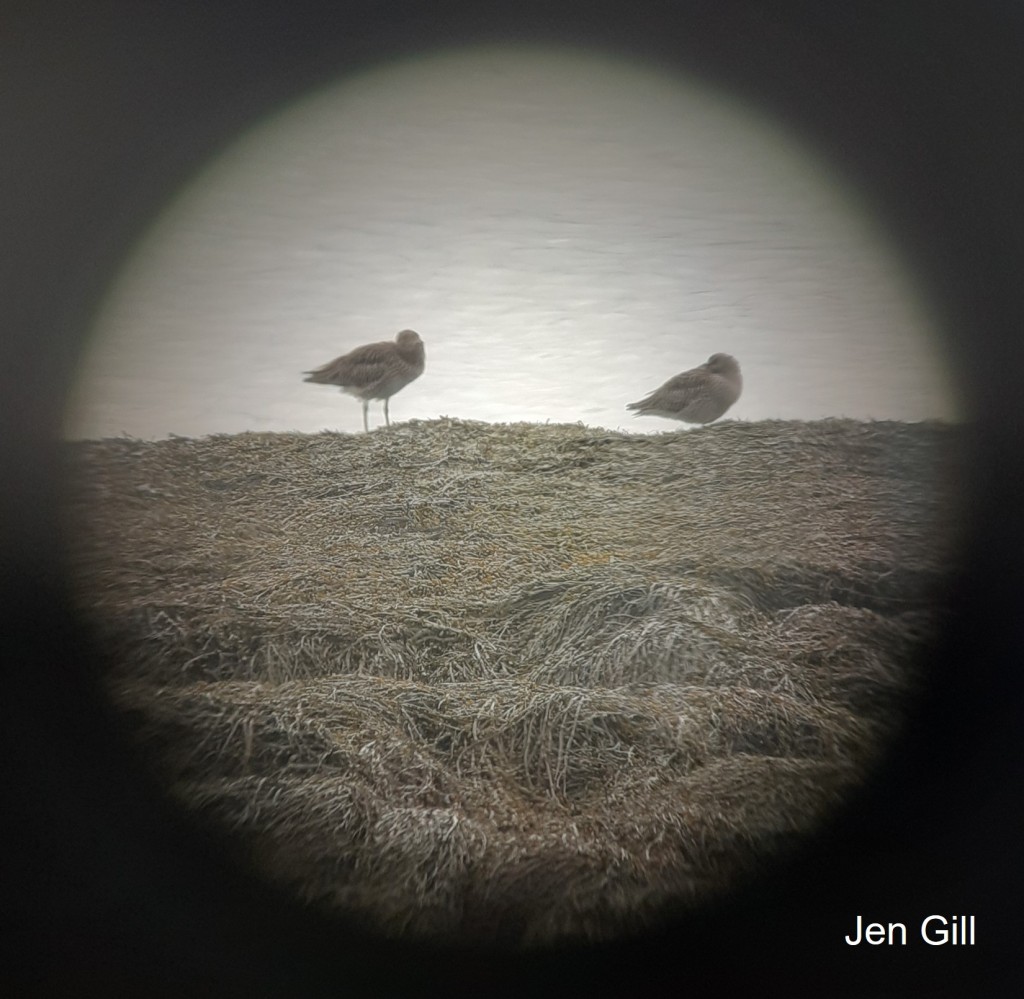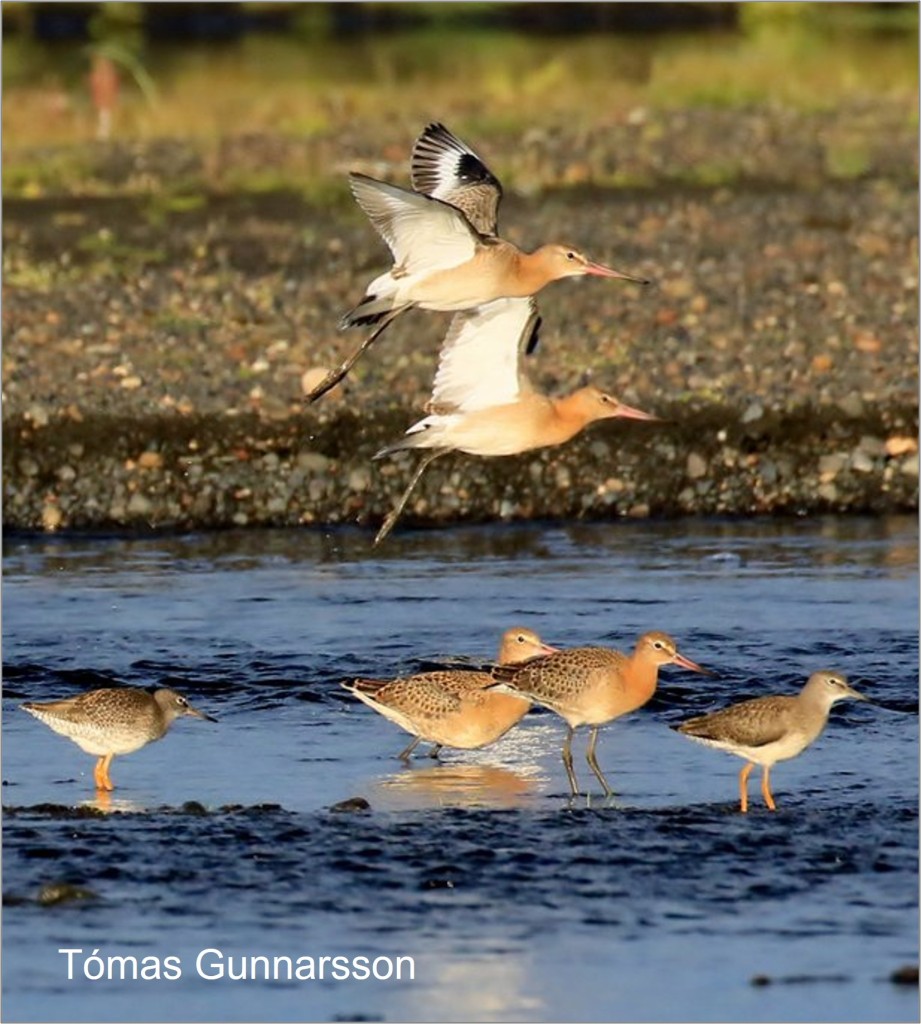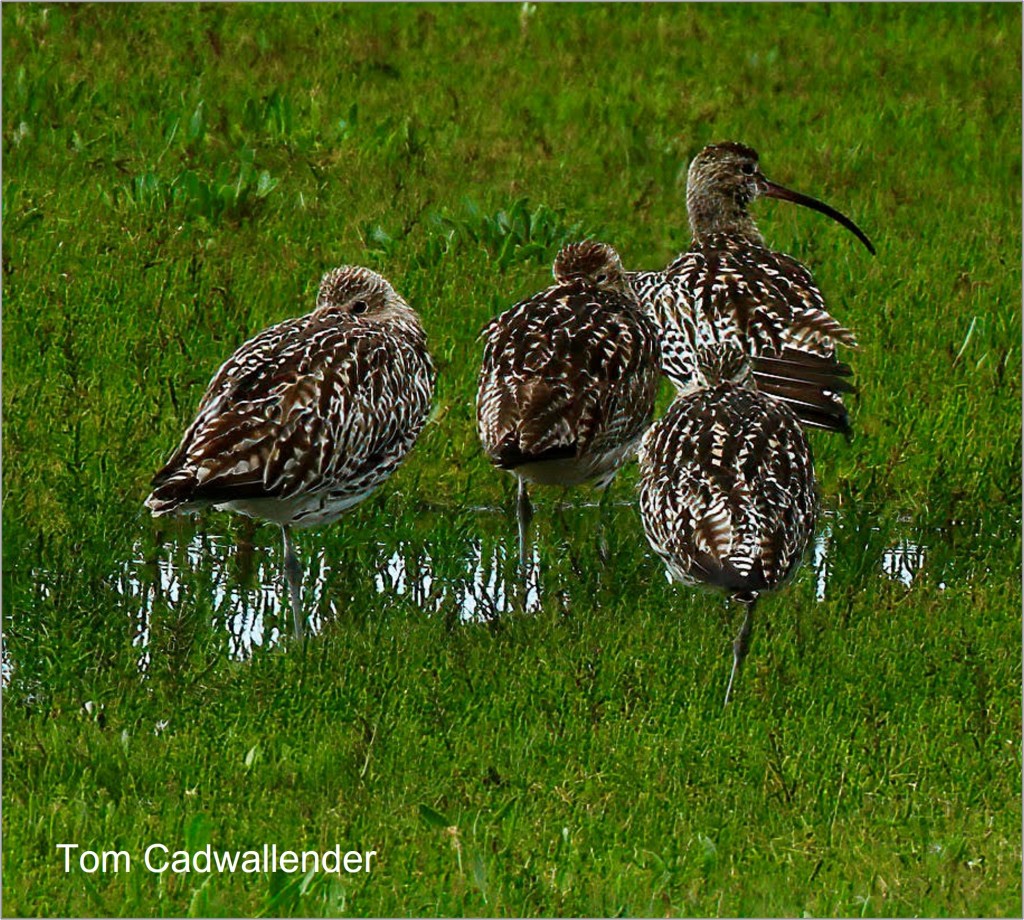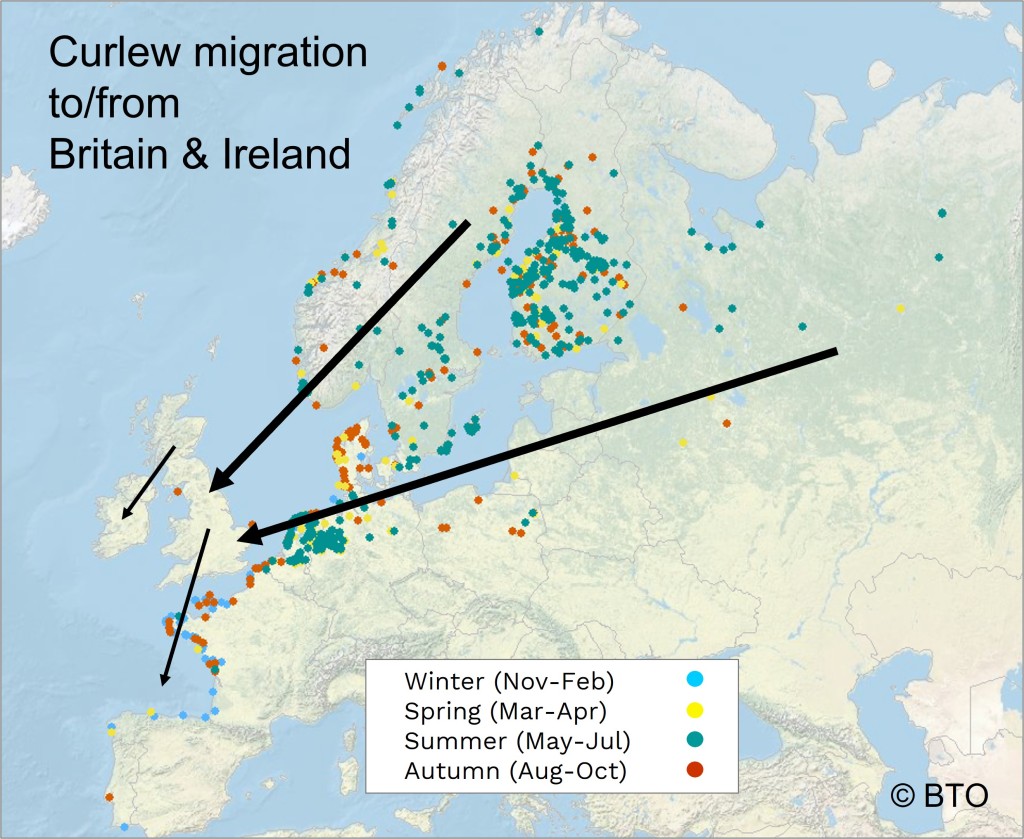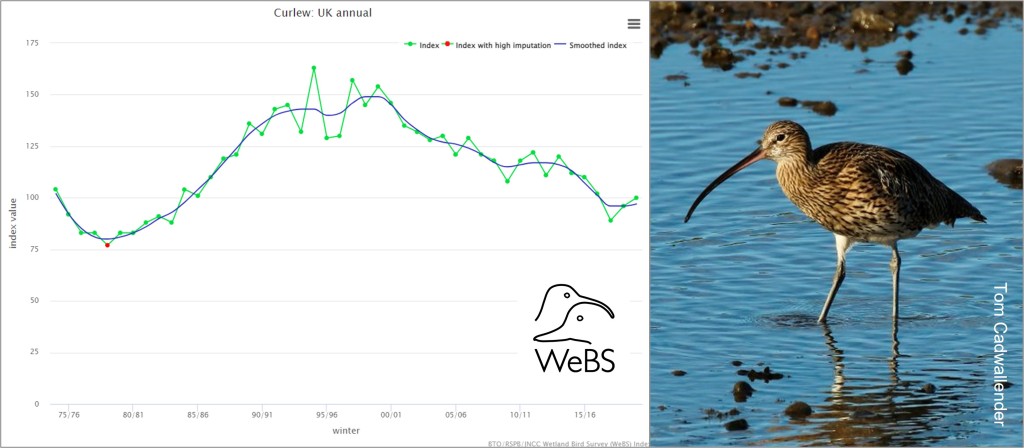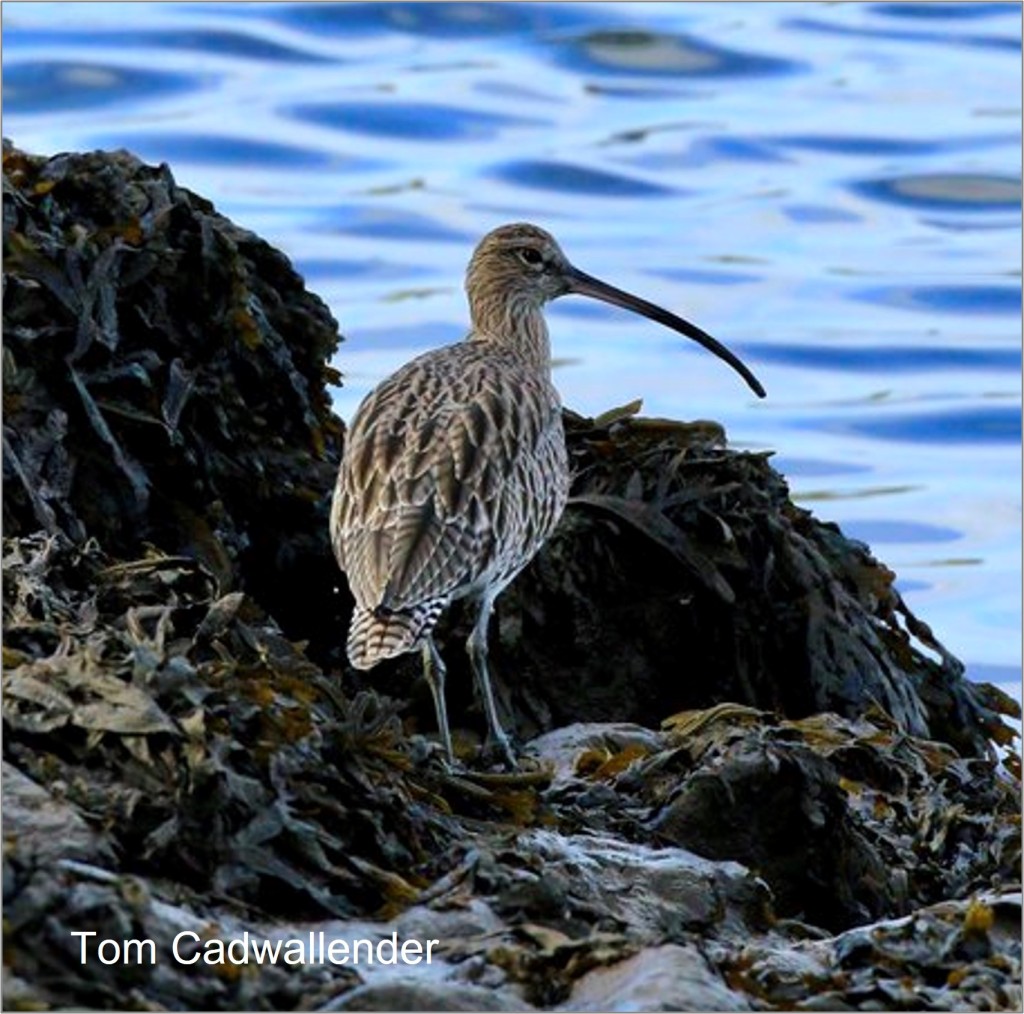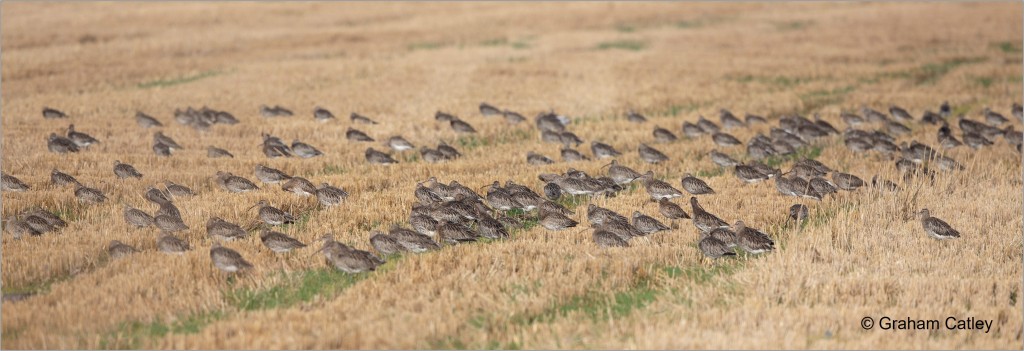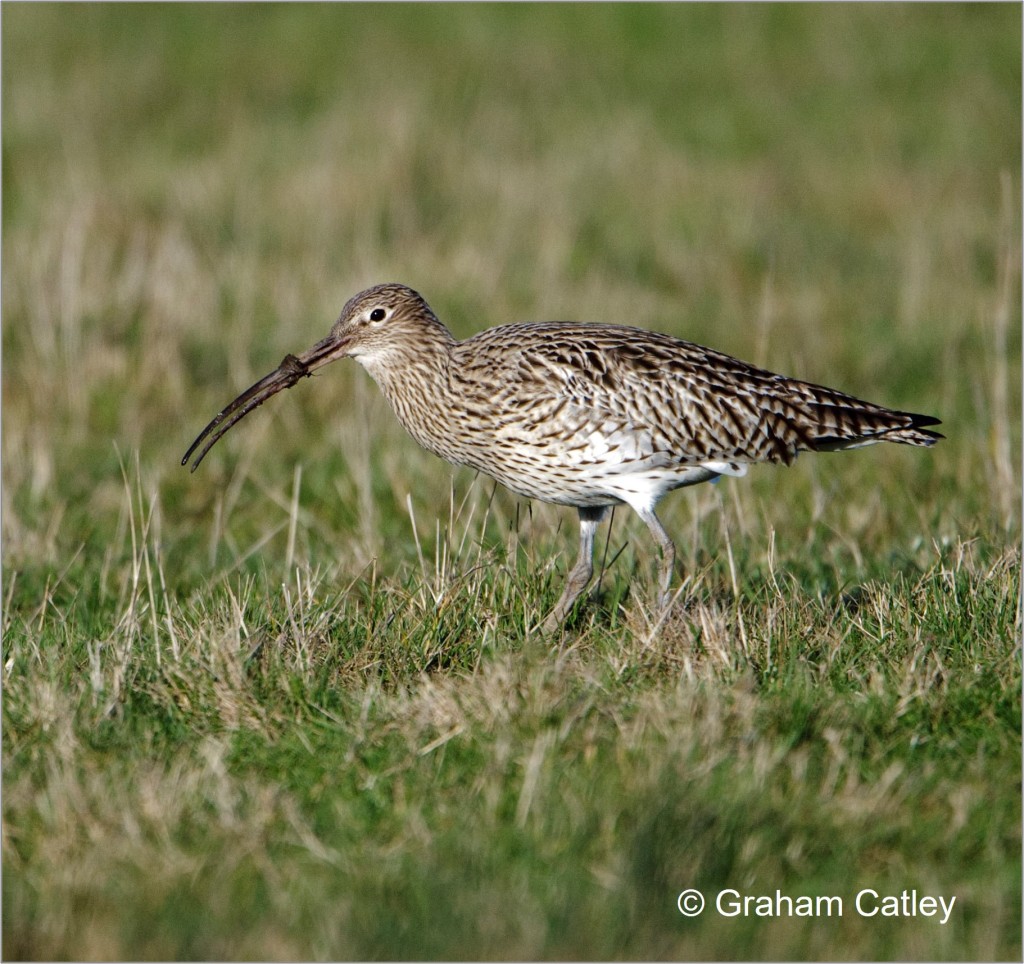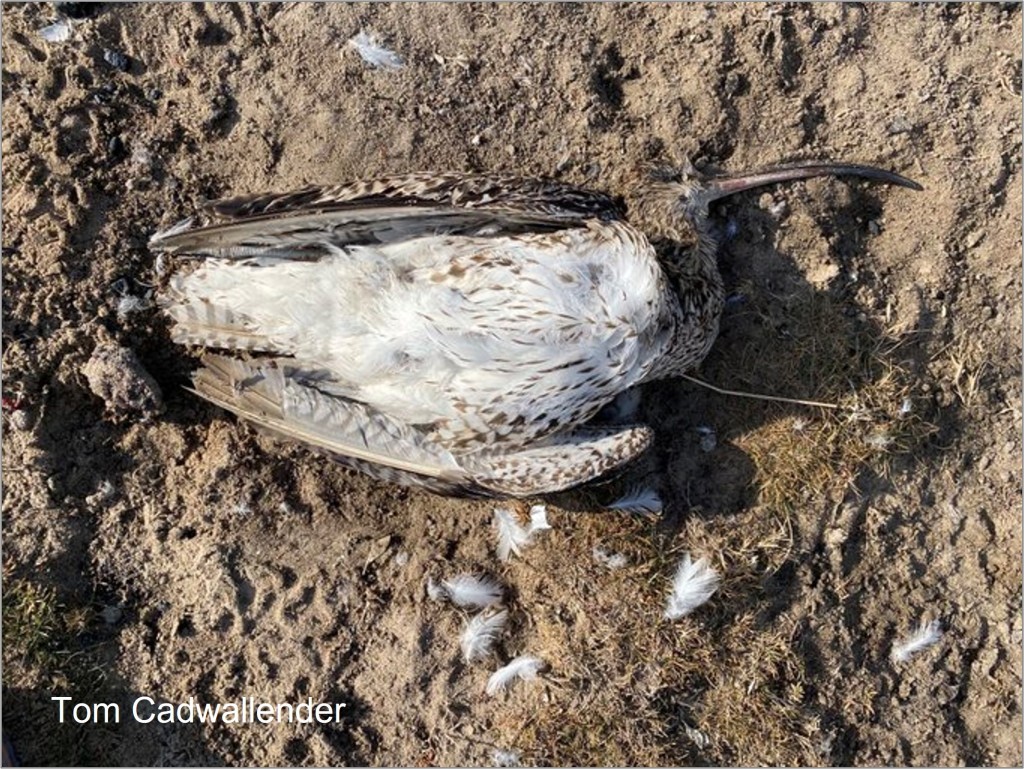There is something magical about standing in Eyrarbakki in South Iceland, in spring, watching small flocks of Whimbrel come in over the sea. Thanks to geolocators and satellite tags (about which more later) we know that these amazing waders will have been in the air for around five days, since leaving the west coast of Africa.
Looking down at the seaweed-covered rocks on the morning of 27th April 2022, we could pick out small groups of new arrivals. Most were resting but one bird was looking for crabs, just as it had been doing in West Africa just a few days previously. A few birds headed off inland while we were watching, making the distinctive seven-note whistle as they left. It sounded almost like a cry of “made it”!

Setting the scene
We had been here before. On 22nd April 2008, I did a live broadcast for the BBC Radio 4 programme World on the Move from this very spot, when I described visible migration to Brett Westwood. On that day, we could see Purple Sandpipers and Turnstone feeding on the tide edge, White Wagtails and Meadow Pipits, newly arrived from Iberia, and small flocks of Golden Plover flying in low over the sea. During the programme, a gaggle of 35 Pink-footed Geese flew in strongly from Britain, as did four Arctic Skuas that had spent winter in the Southern Hemisphere. You can listen to the programme HERE.
On 27th April 2022, the skies were not as busy as they had been fourteen years previously. High pressure over the British Isles and northerly winds across the Atlantic seemed largely to have pressed ‘pause’ on migration from Britain & Ireland. There were small numbers of newly-arrived White Wagtails, Meadow Pipits and Black-headed Gulls feeding on insects emerging from the banks of rotting seaweed, but the stars were definitely the Whimbrel.
These banks of seaweed will be even more important in May, when there will be hundreds of waders refuelling for the next leg of their journeys, with Sanderling and Dunlin on their way to Greenland and some Knot and Turnstone perhaps flying as far as northeast Canada. When the tide is high enough to wash maggots out of the seaweed, you can sometimes see Red-necked Phalaropes along the tide-line, spinning around and picking food off the surface of the water.

Whimbrel migration
We knew that the Whimbrel were on their way because Global Flyway Network had published a map showing the location of ‘Acuno’, a bird wearing a satellite tag that was put on in the Bijagós archipelago of Guinea Bissau. It had been logged west and north of Ireland on the previous evening, already 6000 km and 4 days into its migration. Doing the sums, it seems unlikely that it could have reached Eyrarbakki by the time that we were there but perhaps it flew past soon after, sending signals back to mission control that would confirm arrival**.
** An hour after I published this blog, Acuno was found to have diverted to the Faeroes. It may breed there – as many Whimbrel do – or if could have run out of fuel and landed there, to put on some extra grammes of fat. We’ll see whether it resumes migration.
** Three weeks later, Acuno flew to Iceland. How much will it have been disadvantaged by giving up on direct flight?
Only a minority of Whimbrel fly straight from Africa to Iceland in spring although almost all fly directly south in the late summer. Most individuals spend late April and early May in Ireland, the UK or on the west coast of mainland Europe. Ireland is by far the most important staging area. The individuals on Eyrarbakki beach may have been tired but there could be advantages to being an early bird. See Time to nest again? based on a paper by Morrison et al.
There are several WaderTales blogs about Icelandic Whimbrels:
Whimbrels on the move summarised the movements of Icelandic birds, based on reports of ringed and colour-ringed individuals. In the paper upon which the blog was based (Gunnarsson & Guðmundsson) there was a strong suggestion that birds only stop off in Britain & Ireland on the way north. Geolocator-based research by Alves et al showed that at least some birds were flying straight from Iceland to West Africa and that these sea-crossings could be very rapid.
Migrations to and from Africa were investigated further in a paper by Camilo Carneiro et al that was summarised in Iceland to Africa, non-stop. More recently, papers by the same team have shown that the most consistent point of the annual migration story is departure from Africa and discussed the links between weather and phenology. These two papers have appeared as the WaderTales blogs – Whimbrel: time to leave and A Rhapsody of Whimbrel.
The latest blog about this research is Winter conditions for Whimbrel, based on a paper that assesses the influence of winter conditions on subsequent breeding performance.
Searching for Black-tailed Godwits
We had seen a flock of eight Whimbrel, earlier in the morning, when we were checking fields for colour-ringed Black-tailed Godwits. The Whimbrel were gliding into land, about five km from the coast, before seeming to melt into a patch of rough grassland, bleached after winter frosts.
We did not pay the Whimbrel much attention as, on the other side of the road, there were Black-tailed Godwits probing for worms in silage fields that were already green, after a few days of warmth and the liberal addition of fertilizer. This is our target species during spring trips to Iceland. We have discovered that the arrival time of individuals is remarkably consistent from year to year, which initially seemed surprising, given that migration appears to be getting earlier. There is more about this in Why is spring migration getting earlier? based on a paper in Proceedings of the Royal Society B.
One of the fascinating things about visiting Iceland is that no two years are the same. 2022 has been a dry, warm spring, with northerly winds potentially delaying migration from Britain and Ireland, as mentioned earlier. Early-arriving Black-tailed Godwits that were wearing colour-rings were birds that winter in Portugal and France and migrate via the Netherlands. There was a period of helpful winds for these early birds that fly further but get to Iceland earlier. This strategy is discussed in the blog Overtaking on Migration, based on a paper in Oikos.
Looking forwards
The short Icelandic summer provides fantastic conditions for these waders to raise their chicks, although there are concerns as to how agricultural development, increased forestry and infrastructures will affect these species in the future. In June, in just two months’ time, adults will cross the Atlantic. Black-tailed Godwits head for the British Isles and the west coast of continental Europe and Whimbrel will return to West Africa. By August, the next generation will be preparing for the journey south and we will be here in future springs to monitor their return to Iceland.
WaderTales blogs are written by Graham Appleton (@GrahamFAppleton) to celebrate waders and wader research. Many of the articles are based on published papers, with the aim of making shorebird science available to a broader audience.
